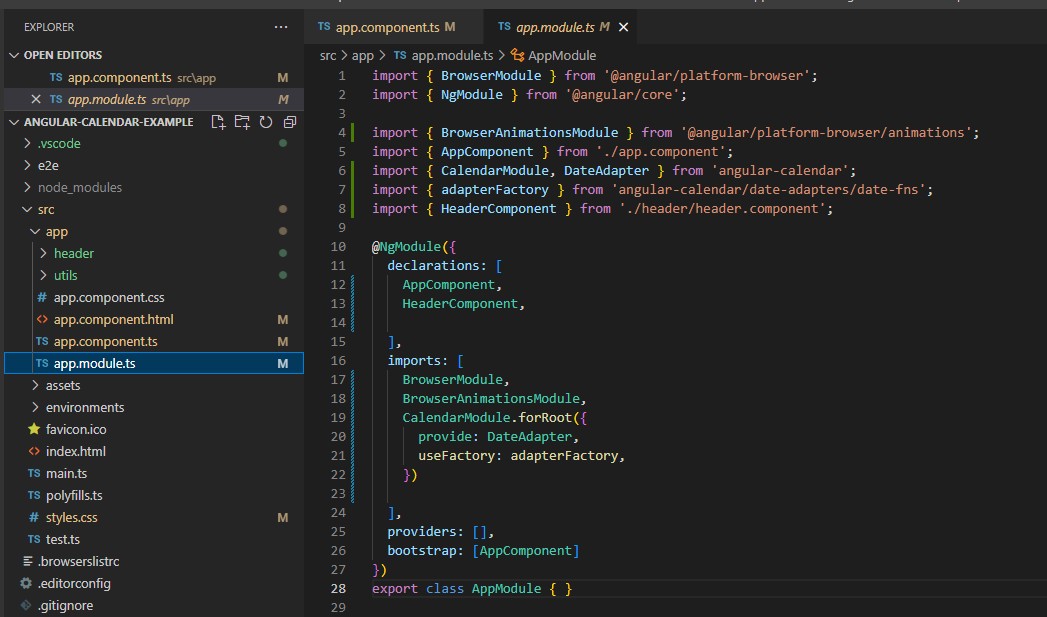Angular is a powerful framework for building web applications, especially single-page applications (SPAs). When diving into Angular development, one of the first questions that comes up is: What Language is used? Understanding the languages at the heart of Angular is crucial for any aspiring or current Angular developer.
Angular, much like the .NET framework for .NET applications, provides a structured foundation for your project. Within this framework, several key languages come into play to construct a functional and dynamic application. Let’s break down the core languages you’ll encounter when working with Angular.
The primary language for writing application logic in Angular is TypeScript. TypeScript is a superset of JavaScript, meaning it includes all of JavaScript’s features and adds optional static typing, classes, and interfaces. This makes TypeScript particularly advantageous for larger Angular projects as it enables object-oriented programming principles and helps catch errors during development rather than at runtime. TypeScript’s syntax shares similarities with C#, which can be beneficial for developers familiar with the .NET ecosystem.
dayClicked({ date, events }: { date: Date; events: CalendarEvent[] }): void {
console.log(date);
if (isSameMonth(date, this.viewDate)) {
if (
(isSameDay(this.viewDate, date) && this.activeDayIsOpen === true) ||
events.length === 0
) {
this.activeDayIsOpen = false;
} else {
this.activeDayIsOpen = true;
this.viewDate = date;
}
}
}This code snippet illustrates TypeScript within an Angular component, demonstrating event handling and date management within a calendar feature.
Angular applications are built using a component-based architecture. Each component encapsulates the structure, style, and logic for a part of the user interface. These components are composed of three main parts:
-
HTML (HyperText Markup Language): Used for structuring the content and layout of the component’s view. HTML defines the elements and their arrangement on the page.
-
CSS (Cascading Style Sheets): Responsible for styling the component’s appearance. CSS controls the visual aspects like colors, fonts, and layout, ensuring a visually appealing user interface.
-
TypeScript: As mentioned, TypeScript provides the business logic for the component. It handles data manipulation, user interactions, and communication with services or APIs.
Components in Angular are designed to be reusable and modular. They can be nested within each other, allowing for the construction of complex UIs from smaller, manageable pieces. The main application component, app.module, serves as the root and orchestrates all other components.
In the HTML example above, you can see how components are referenced within each other using tags like <app-header>. This demonstrates the component-based architecture in action.
Looking at a Header component, you’ll again see the interplay of languages.
While Angular simplifies many complexities, understanding these underlying languages is key to effective development. Although frameworks like Kinetic might abstract some of these details for specific products, knowing what’s under the hood, like dependency injection, methods, and constructors within TypeScript components, is invaluable.
Finally, it’s worth mentioning JSON (JavaScript Object Notation), although not a programming language in itself, it’s a crucial data format in web development and often used in Angular applications for data exchange. JSON provides a standardized, human-readable format for transmitting data between the server and the client.
{
"Key1": "StringValue",
"Key2": 123
}In summary, when asking what language Angular uses, the answer is multifaceted. Angular development primarily involves TypeScript for logic, HTML for structure, and CSS for styling. Understanding these languages, along with data formats like JSON, is essential for building robust and dynamic web applications with Angular.

